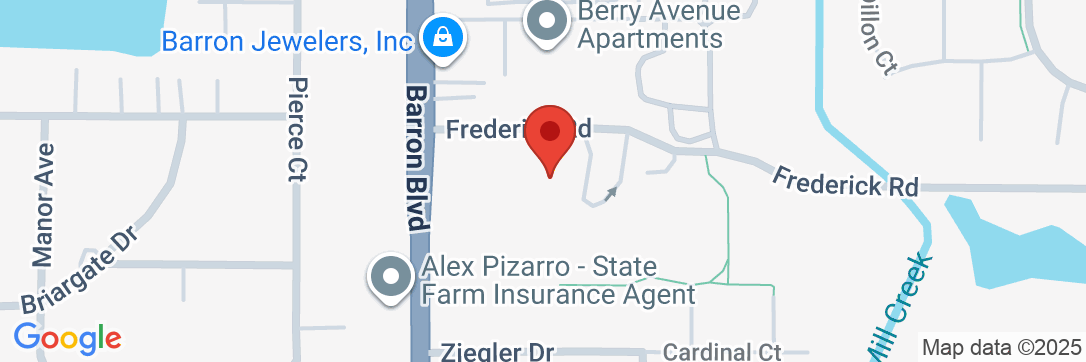Community Consolidated School District 46 and the Board of Education are committed to fulfilling our mission of empowering learners, creating equity, and cultivating community as we maintain excellence when it comes to our educational offerings. We remain focused on protecting our high-performing schools, benefiting both our students and taxpayers.
Community Consolidated School District 46 is placing a limiting rate proposal on the ballot in March 2024. This type of voter-approved funding proposal, unlike a bond referendum, will allow the District to address both capital facility and operating needs districtwide.
The limiting rate proposal will allow for a net tax rate decrease.
The District will pay off existing long-term debt before the new limiting rate increase would be implemented. The net effect is a reduction in the District’s total tax rate of 10 cents. For a home with a $300,000 fair market value, taxes will go down by an estimated $90.45 per year.
This glossary of financial terms is provided to help explain terms you may hear in presentations and printed materials.
Accrual Basis – Basis of accounting under which revenues are recorded when levied and expenditures are recorded as soon as they result in liabilities regardless of when the revenue is received or the payment is made.
ADA – Americans with Disabilities Act.
AHU – Air Handling Unit.
Amortization – The gradual elimination of a liability, such as a debt, in regular payments over a specified period. Such payments must be sufficient to cover both principal and interest.
Annual Financial Report (AFR) – A set of U.S. Government Financial Statements comprising the financial report of a state, municipal, or other governmental entity that complies with the account requirements promulgated by the Governmental Account Standards Board.
ARP/ESSER – American Rescue Plan Act Elementary and Secondary School Emergency Relief Fund.
Assessed Value – The value placed on the property for tax purposes and used as the basis of division of the tax burden. This amount is subject to the State equalization factor and the deduction of exemptions.
Benchmarking – A measurement of performance of the District against similarly socioeconomic and demographic districts.
Board of Education – An elected board consisting of seven members, created according to State law and vested with responsibilities for educational activities within a geographic area. The Board establishes policy, hires the Superintendent, and governs the operations of the district.
Bond – A written promise to pay a specific sum of money (face value) at a fixed time in the future (maturity) and carrying interest at a fixed rate of interest usually paid periodically.
Bond Indenture – A legal document or contract between the bond issuer and the bondholder that records the obligations of the bond issuer and benefits owed to the bondholder.
Budget – A plan of financial operation embodying an estimate of proposed expenditures for a given period or purpose and the proposed means of financing them.
Budget Calendar – The schedule of key dates used in the preparation and adoption of the Annual Budget.
Budgetary Control – The control or management of the business affairs of the district per an approved budget with the responsibility to keep expenditures within the authorized amount.
Capital Budget – A plan of proposed capital spending and the means of financing them for the current fiscal period. It is generally part of the district’s overall budget.
Capital Projects Fund – The fund that accounts for financial resources to be used for the acquisition, construction, or improvement of major capital facilities.
Categorical State Aid – Revenue allocated by the State for various categories of programs administered by the local district. Examples of categorical state aid include special education, special education transportation, bilingual education, gifted education, etc. These funds do not cover the entire program cost but must be supplemented by other district revenues.
Consumer Price Index (CPI) – A measurement that examines the weighted average of prices of a basket of consumer goods and services, such as transportation, food, and medical care. The CPI is calculated by taking price changes for each item in the predetermined basket of goods and averaging them. Changes in the CPI are used to assess price changes associated with the cost of living; the CPI is one of the most frequently used statistics for identifying periods of inflation or deflation.
Corporate Personal Property Replacement Taxes (CPPRT or Replacement Taxes) – Revenue collected by the state of Illinois and paid to local governments to replace money that was lost by local governments when their powers to impose personal property taxes on corporations, partnerships, and other business entities were taken away.
Debt – An obligation resulting from the borrowing of money or the purchase of goods and services. Debts of local education agencies include bonds, warrants, and notes, etc.
Debt Limit – The maximum amount of general obligation debt, which is permitted by law.
Debt Service – Expenditures for the retirement of debt and the payment of interest.
Debt Service Fund – The fund that accounts for the accumulation of resources for, and the payment of general long-term debt principal, interest, and related costs.
Deficit – The excess of an entity’s liabilities over its assets or the excess of expenditures over revenues during a single accounting period.
Education Fund – The general operating fund of the District used to account for all financial resources except those that are required to be accounted for in another fund.
Employee Benefits – May include health, dental, vision, life, and long-term disability, and workers’ compensation insurance as well as social security and retirement pension payments.
Encumbrance – The commitment of budgeted funds to purchase an item or service. To encumber funds means to set aside or commit funds for future expenditures.
Equalization – The application of a uniform percentage increase or decrease of values of various areas or classes of property to bring assessment levels, on average, to a uniform level of market value.
Equalization Factor – The factor that must be applied to local assessments to result in an equalized assessed value of the taxable property equal to one-third of market value.
Equalized Assessed Value (EAV) – The assessed value multiplied by the State Equalization Factor. This gives the value of the property from which the tax rate is calculated after deducting any applicable exemptions.
Every Student Succeeds Act (ESSA) – The reauthorization of the 50-year-old Elementary and Secondary Education Act, the country’s national education law, and longstanding commitment to equal opportunity for all students. President Barack Obama signed the bipartisan measure into law on December 10, 2015. ESSA tasks individual states to create a plan to ensure every child is learning and on the path to college and career.
Evidenced-Based Funding (EBF) – A system that went into effect in August 2017, which changed the way school districts receive the bulk of state funds. EBF sends more resources to Illinois’ most under-resourced students. EBF takes the necessary first steps toward ensuring all schools have the resources they need to provide a safe, rigorous, and well-rounded learning environment for all students. EBF demonstrates new mindsets for understanding the relationship between equity, adequacy, and student outcomes.
Exemption – Removal of property from the tax base. An exemption may be partial, as a homestead exemption, or complete as, for example, a church building used exclusively for religious purposes.
Expenditure – A charge incurred, whether paid or unpaid, for current costs, capital outlay, or debt service.
Extension – 1) The process by which the county clerk determines the tax rate needed to raise the revenue (levy) certified by each school district in the country. 2) The actual dollar amount billed to the taxpayers in a district.
FACS – Family and Consumer Science.
Fiduciary Funds – Funds that account for assets held by the District in a trustee capacity or as an agent for individuals, private organizations, other governments, or other funds.
Fire Prevention and Safety Fund – A restricted fund to be used by schools to correct Health and Life Safety violations. It may also be used for asbestos abatement, roof repair or replacement, building replacement, energy conservation, security measures, accessibility needs, paving repairs, and other projects identified as necessary to maintain healthy and safe buildings.
Fiscal Year (FY) – The fiscal year for Illinois School districts begins on July 1 and ends on June 30. The fiscal year beginning on July 1, 2015, and ending June 30, 2016, is the 2016 fiscal year for FY 2016.
Full-Time Equivalent (FTE) – An amount of employed time, expressed as a percentage, where 1 FTE represents one full-time employee for 1 full year.
Function – A group of related activities aimed at accomplishing a major service or program, such as instruction, support services, community services, etc.
Fund – An individual accounting entity with a self-balancing set of accounts.
Fund Balance – The excess of assets of a fund over its liabilities and reserves.
Grants – Contributions or gifts of cash or other assets from another government to be used or expended for a specific purpose, activity, or facility.
Illinois Assessment of Readiness (IAR) – The state assessment and accountability measure for Illinois students enrolled in a public school district. IAR assesses the New Illinois Learning Standards Incorporating the Common Core and will be administered in English Language Arts and Mathematics.
Illinois Municipal Retirement Fund (IMRF) – This fund accounts for the District’s portion of personnel pension costs.
Illinois Standards Achievement Test (ISAT) – Measures individual student achievement relative to the Illinois Learning Standards.
Illinois State Board of Education (ISBE) – Administers public education in the state of Illinois. It is a statewide system of support to provide technical assistance to districts and schools in academic status.
Instruction – The activities dealing directly with the teaching of students or the improvement of instruction.
Inter-Fund Transfers – Amounts transferred from one fund to another fund.
Levy – The total taxes imposed by a government unit.
Long-Range Facilities Plan (LRFP) – A process and discipline that companies use to determine the best strategy for succeeding in the markets they serve and to ensure they have the capabilities needed to support their strategic objectives.
Municipal Retirement/Social Security Fund – The fund that accounts for an activity that relates directly to the District’s share of pension costs associated with maintaining staff. This fund covers employer pension costs such as Illinois Municipal Retirement and Social Security.
Non-Callable – A financial security that cannot be redeemed early by the issuer except with the payment of a penalty.
Object – A category that describes the service or commodity obtained as a result of a specific expenditure. The object categories are salaries, benefits, purchased services, supplies and materials, capital outlay, other transfers, and tuition.
Operating Expenses per Student – Includes all costs associated with a district’s operating costs over the regular school year, such as transportation, building maintenance, salaries, etc.
Operating Funds – The Funds that account for the resources used to fund the day-to-day operations of the district. These generally include the Education, Operations & Maintenance, Transportation, Municipal Retirement/Social Security Fund, and Working Cash Funds.
Operations and Maintenance Fund – Fund that accounts for activity relating to the maintenance of District facilities and fixed assets.
Partnership for Assessment of Readiness for College and Careers (PARCC) – A group of states working together to develop a modern assessment that replaces previous state standardized tests. The test helps ensure that all students have equal access to a world-class education that will prepare them for success after high school in college and /or careers.
Property Tax – Tax levied on the assessed value of real property.
Property Tax Extension Limitation Law (PTELL) – A law designed to slow the rate of growth in taxes by limiting the increase in property tax extensions (excluding taxes for Debt Service) to the lesser of 5% or the percent increase in the National Consumer Price Index for All Urban Consumers (CPI-U) for the previous levy year, plus an additional amount for the new property added to the tax base.
PSAT – Preliminary Scholastic Aptitude Test.
Revenue – The income of a government from taxation or other sources appropriated for the payment of the public expenses.
SREC – Solar Renewable Energy Credits.
STEM – Science, Technology, Engineering, and Math.
Tax Increment Finance (TIF) District – TIF is a specially designated district used as a way to spur economic growth with the hope of encouraging new economic development and jobs. When a TIF is created, future tax revenue from the increased site value generated by development (the tax increment) is dedicated to financing the debt issued to pay for the project.
Taxes – Compulsory charges levied by a government for financing services performed for the common benefit.
Transportation Fund – The fund that accounts for an activity that relates to the transportation of students to and from school daily and for additional interscholastic activities.
Working Cash Fund – A reserve fund from which available cash may be loaned to any fund for which taxes are levied.




